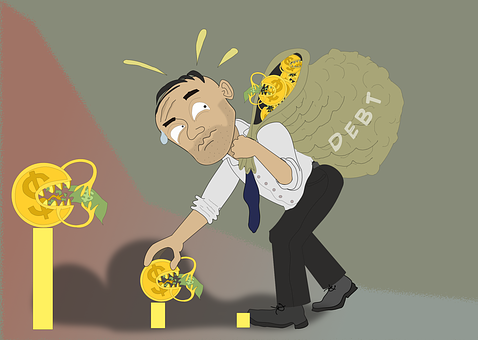Basics of Credit Market

The credit market is also called debt market or bond market which plays a very significant role from the perspective of financing and investing respectively for corporations as well as individuals. It is a financial market where borrowers can issue new debt in the primary market, subsequently buy and sell securities in the secondary market.
Why use credit market?
The maturity of the bonds are usually more than one year and used for raising capital while providing interest to the other party. Investors take advantage of credit market for earning money. The financial instruments of credit market can be considered safer than investing in stocks, because investors receive fixed interest and if company happen to go insolvent or bankrupt bondholders get priority before shareholders.
Who are the participants of credit market?
Typically, there are two parties involved in the credit market in order to make any transaction successful. In a lay man term, one party is issuer of debt securities (government, corporations) while another party is the purchaser of securities (individuals like you and me).
Where credit market instruments are being traded?
When it issues very first time, it is only traded in primary market. Afterwards, it will continue to be traded in the secondary market either in the form of Over The Counter (OTC) transactions or Organized Exchanges (Bond Market).

What is a bond?
Bonds relate to debt instruments which provide fixed interest rate or coupon rate upon maturity. Bonds differ from other types of debt securities such as- commercial papers, T-bills and other money market instruments. Therefore, in a simple term we can say the issuer is a borrower and the buyer is a lender who gets the interest payment.
What are the types of Bonds?
Among various types of bonds the three common types are:
Government bonds or T-bonds (Treasury bonds): The US Treasury issues this type of bonds to finance their expenditure. The beauty of treasury bonds are it does not have any default risk due to the fact that treasury has the authority to print money for repayment of the lender. There is a pitfall which is the interest rate is very low, sometimes equivalent or lesser than the risk free investment. Also, after taking into consideration of inflation the return may not be attractive anymore.
Municipal bonds: This type of bonds are issued by local or state government. It is used to raise fund for the development infrastructure and public welfare. Municipal bonds are exempted from federal taxes and mostly from state taxes which make this instrument lucrative for investors. The two most common types of municipal bonds are general obligation bonds and revenue bonds. The basic difference between them are the latter is not backed by government taxing power.
Corporate bonds: As the name suggests, this type of instrument are issued by corporations. Before investing in corporate bonds, the investors always look for the payment ability of a company. It has a nominal value of $1,000 which pays interest semi-annually. Degree of risk varies from each corporation and sectors.
What are the characteristics of corporate bonds?
• Collateral
• Mortgage bonds: real assets are pledged.
• Equipment trust certificates: specific, titled, or unidentifiable equipment
• Collateral bonds: secured by financial assets
• Debentures: unsecured bonds
• Claim on assets
• Senior debt: highest priority to the company’s general assets
• Subordinated: can be claimed after senior debt
The three means of principal payment are sinking fund, call provisions and conversions.
How to measure the risk of investing in corporate bonds?
The benchmark of determining the degree of risk before investing in corporate bonds are categorized from low risk (AAA) to higher risk (BBB). Bonds which are rated below BBB are considered sub-investment grade. Hence, the rating of corporate bonds plays vital role for investors.
Who are the investors in corporate bonds?
The majority of investors in corporate bonds are insurance companies, pension funds, households and foreign investors. The eligibility of investors are long term investment period, need to be patient until maturity, safety investment grade, tax issues.
What is junk bonds?
In the above paragraph, three common types of bond are discussed but there is another known type of bonds which has very high risk but also provide high return is called junk bonds. The rating is below BBB.
When bonds are traded in discount or premium?
If a bond is issued in primary market or trading in secondary market below its nominal value, it is defined as discount bond while premium bond are traded above the face value. Zero coupon bonds are similar to the discount bond but it does not pay any coupon payment. Investors will receive the face value upon maturity.

What does rating agency do?
Rating agencies like Moody’s, Standards and Poor’s and Fitch provides the debt rating before issued by the borrowers.
The calculation of bonds will be discussed in my upcoming posts. Stay tuned. Thank you.
Welcome to the Steemit Blockchain atikkarim enjoy post and explore
✅ Enjoy the vote! For more amazing content, please follow @themadcurator for a chance to receive more free votes!